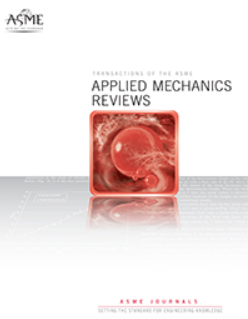Analysis and Design of Lateral Framing Systems for Multi-Story Steel Buildings
IF 16.1
1区 工程技术
Q1 MECHANICS
引用次数: 0
Abstract
This study focused on identifying the most appropriate structural system for multi-story buildings and analyzing its response to lateral loads. The study analyzed and compared the different structural systems to determine the most suitable option. The study aims to utilize three lateral framing systems (moment, braced, and diagrid) in order to investigate which system needs the least amount of steel to meet the design requirements. Thus, in order to determine the estimated steel savings of this system as compared to the moment and braced frames, the four-story and eight-story buildings that are 96′ × 96′ in the plane and utilize moment frames, braced frame, and diagrid framing structural systems are presented. Based on the American Society of Civil Engineers (ASCE) 7–10, load combinations are considered for the designs, and the RAM structural analysis is used for the modeling and analysis of the structural systems. The findings of this study’s illustrations were the optimum for the analysis of wind of 176 kips and seismic loads of 122 kips, the building’s lateral displacements, which were the lowest at 0.045 inches, the story drift, the story stiffness, and the story shear for each structural system. In addition, the diagrid system also had the least amount of shear for all the stories, suggesting that it is better able to manage the lateral forces. These results indicate that the diagrid system is a more efficient structural system and can be recommended for use in multi-story buildings.多层钢结构横向框架体系的分析与设计
本研究的重点是确定最适合多层建筑的结构体系,并分析其对横向荷载的响应。研究分析和比较了不同的结构体系,以确定最合适的方案。该研究旨在利用三种横向框架系统(弯矩、支撑和网格),以研究哪种系统需要最少的钢材来满足设计要求。因此,为了确定该系统与弯矩框架和支撑框架相比的估计钢材节约量,在平面上采用96 ' × 96 '的四层和八层建筑,并采用弯矩框架、支撑框架和网格框架结构系统。基于美国土木工程师学会(American Society of Civil Engineers, ASCE) 7-10,在设计中考虑荷载组合,并采用RAM结构分析对结构体系进行建模和分析。本研究插图的结果对于176 kips的风和122 kips的地震荷载、建筑物的横向位移(最低为0.045英寸)、楼层漂移、楼层刚度和每个结构系统的楼层剪力的分析是最优的。此外,在所有楼层中,网格系统也具有最小的剪切量,这表明它能够更好地管理侧向力。这些结果表明,网格结构体系是一种更有效的结构体系,可以推荐用于多层建筑。
本文章由计算机程序翻译,如有差异,请以英文原文为准。
求助全文
约1分钟内获得全文
求助全文
来源期刊
CiteScore
28.20
自引率
0.70%
发文量
13
审稿时长
>12 weeks
期刊介绍:
Applied Mechanics Reviews (AMR) is an international review journal that serves as a premier venue for dissemination of material across all subdisciplines of applied mechanics and engineering science, including fluid and solid mechanics, heat transfer, dynamics and vibration, and applications.AMR provides an archival repository for state-of-the-art and retrospective survey articles and reviews of research areas and curricular developments. The journal invites commentary on research and education policy in different countries. The journal also invites original tutorial and educational material in applied mechanics targeting non-specialist audiences, including undergraduate and K-12 students.

 求助内容:
求助内容: 应助结果提醒方式:
应助结果提醒方式:


